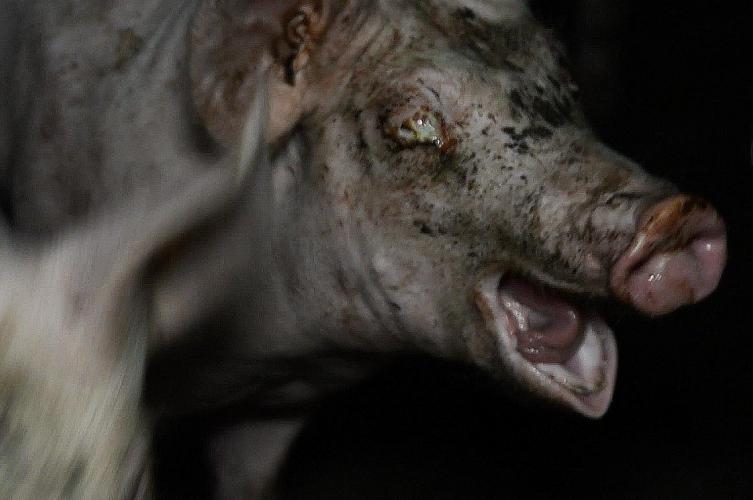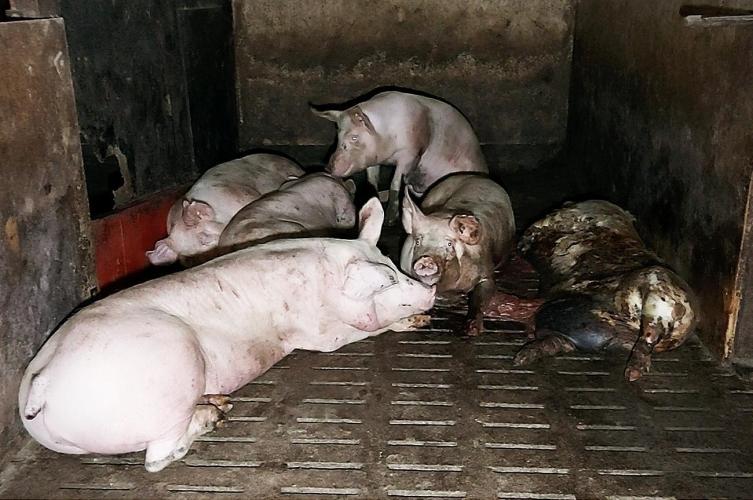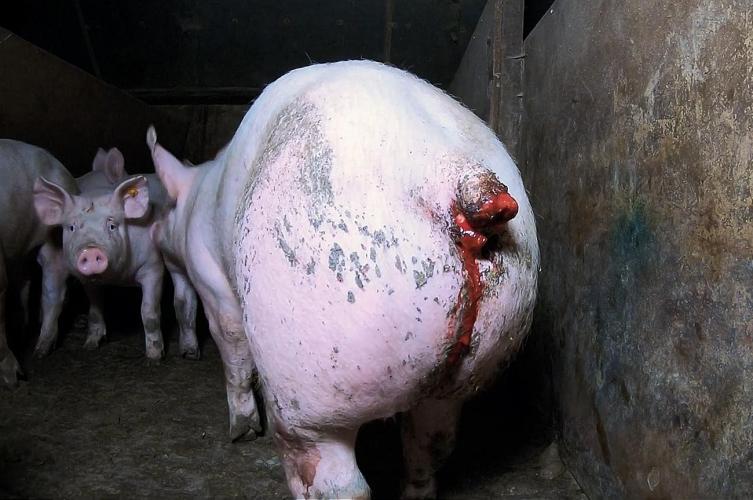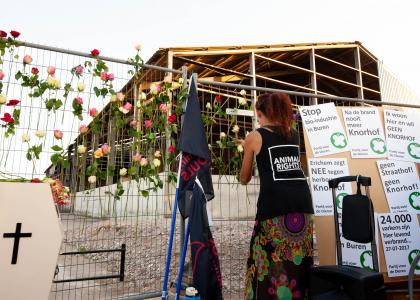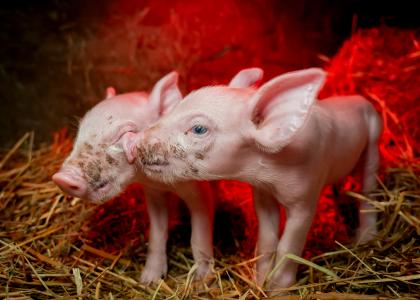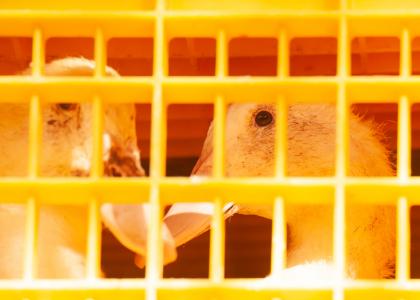Inhoud
Cannibalism and sick pigs in Flemish pig barns
Animal Rights conducted six months of research into the living conditions of pigs in the Flemish pig barns. There we saw shocking scenes: Animals with large, unkempt abscesses, inflamed eyes, carcasses of the dead among the living and cannibalism.
Animal Rights campaign coordinator Els Van Campenhout: "Pigs in the meat industry do not lead a happy life but undergo a terrible existence before they eventually die in the stables or die a horrible death in the slaughterhouse. There is nothing humane about the pig industry."
Also read: Het trieste bestaan van een vleesvarken.
Also read: Zieke varkentjes voor oud vuil achtergelaten
The pig industry has no compassion for the animals it exploits. Even sick animals do not receive medical care.
Sad living conditions
The images show how sick and crippled animals, some with necrotic abscesses are in the stables. One pig has an abscess the size of a large melon hanging from his stomach. A visually impaired pig with a blind eye on one side and an inflamed eye on the other side just sits among the other pigs. We see how the blood runs from the back of a pig, because the tail is eaten by others. We see how a pig that is foaming at the mouth, struggles to stand.
Even the animals that have no visible injuries or illnesses, their so-called "life" is nothing more than a sad existence. The animals live on concrete grids above their own excrement. Day in and day out they are locked up in stables where often no daylight or fresh air even enters.
UPDATE
Animal Rights has informed Flemish Animal Welfare Minister Ben Weyts of the abuses. The minister has requested the addresses from Animal Rights and will carry out inspections this week.
Lidl supermarket has informed Animal Rights that they will check whether they sell meat from the pig companies where Animal Rights filmed.
CADAVERS
On the images we see how a partially eaten cadaver lies in an aisle. Pigs literally have nothing to do in the dank stables in which they are kept. They cannibalize each other out of boredom: tail biting and ear biting is commonplace in the industry.
In addition, we see several carcasses among the still-living pigs. One of the carcasses is already completely discolored and must have been there for a while. The other pigs sniff and lick the carcass, there is even chewing on the hoof. We also see a cadaver in an even further state of decomposition. That too is still between the live pigs.
"The pig industry has not a shred of compassion for the animals it exploits. Even sick animals do not receive medical care. Everything is only about the money that can be earned from the suffering of the animals. The individual animals do not matter to this industry that has no moral sense whatsoever. Otherwise, it would have ceased to exist a long time ago," says Van Campenhout.
Neglected pigs
In the same barn where the carcasses were scattered, Animal Rights went to film pigs left behind for four weeks. While all the other pigs were taken to slaughter, two sick pigs were left neglected in the horror barn. Animal Rights strongly suspects that the animals are not receiving medical care, since one pig walked lamely and the other pig has an abscess the size of a large melon dangling from the belly. Animal Rights made a report to the Animal Welfare Department about the neglected pigs.
No enrichment
In the large majority of the stables examined, no enrichment material was present, although this is mandatory according to the legislation. The Royal Decree of 15 May 2003 on the protection of pigs in pig farms states: "Pigs must have at their disposal at permanent disposal sufficient material for examination and play (e.g., straw, hay, wood, sawdust, mushroom compost, peat or a mixture thereof), provided that the health of the animals is not endangered as a result." These minimum legal standards are already far from sufficient for the mental stimulation of the pigs, but even these are not being met in practice.
Piglets
Pigs are usually only 26 weeks or six months old when killed. Most animals never reach the adult age of five years and are slaughtered when they are actually still piglets. Pigs can naturally live up to 15 to 20 years. "Pork that is in the supermarkets and eaten en masse is actually the meat of young piglets," says Van Campenhout.
6 million pigs
In 2020, Belgium had 6,218,271 pigs: in Flanders it was 5,833,063 pigs, in Wallonia the pig herd is much lower with 'only' 385,203 pigs.1 2
In 2021, more than 11,584,000 pigs were slaughtered in Belgian slaughterhouses. Most pork is destined for export to European countries. The largest customers are Poland, Germany, the Netherlands, the Czech Republic and Italy. In 2020, a total of 690,172 tons of pork were exported abroad.3
Pig farming is immoral
Animal Rights has been researching the living conditions of pigs in pig farming for years. The list of abuses we have already seen is long: suffering from heat stress in both the stables and on transport, withholding medical care, dying in the stables, transporting sick and crippled animals, beating during loading to systematic mistreatment in the slaughterhouses and the cries of pigs left conscious while hanging upside down in the slaughter line. This terrible industry is completely immoral.
Animal Rights
Animal Rights does not seek better living conditions for agricultural animals, but the end of an industry that exploits animals and modifies them according to human need and complacency. We ask everyone to stop contributing to this immoral system and call on consumers to switch to a plant-natural lifestyle.

